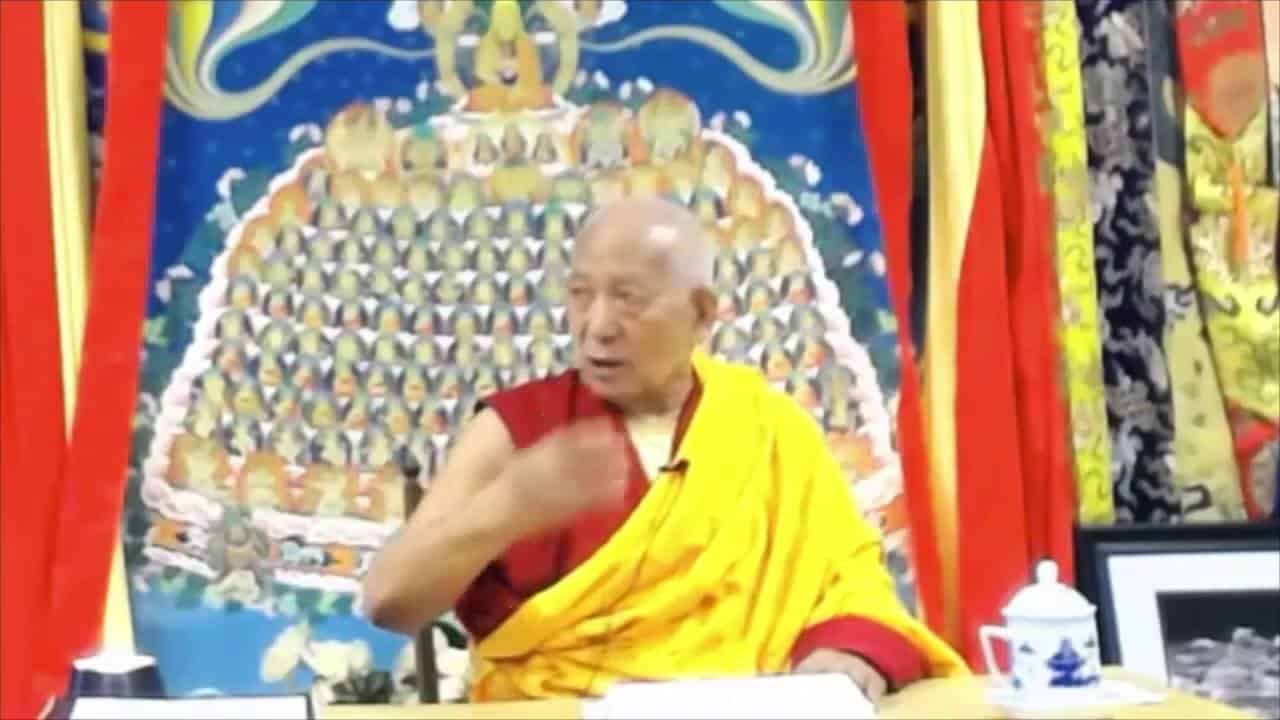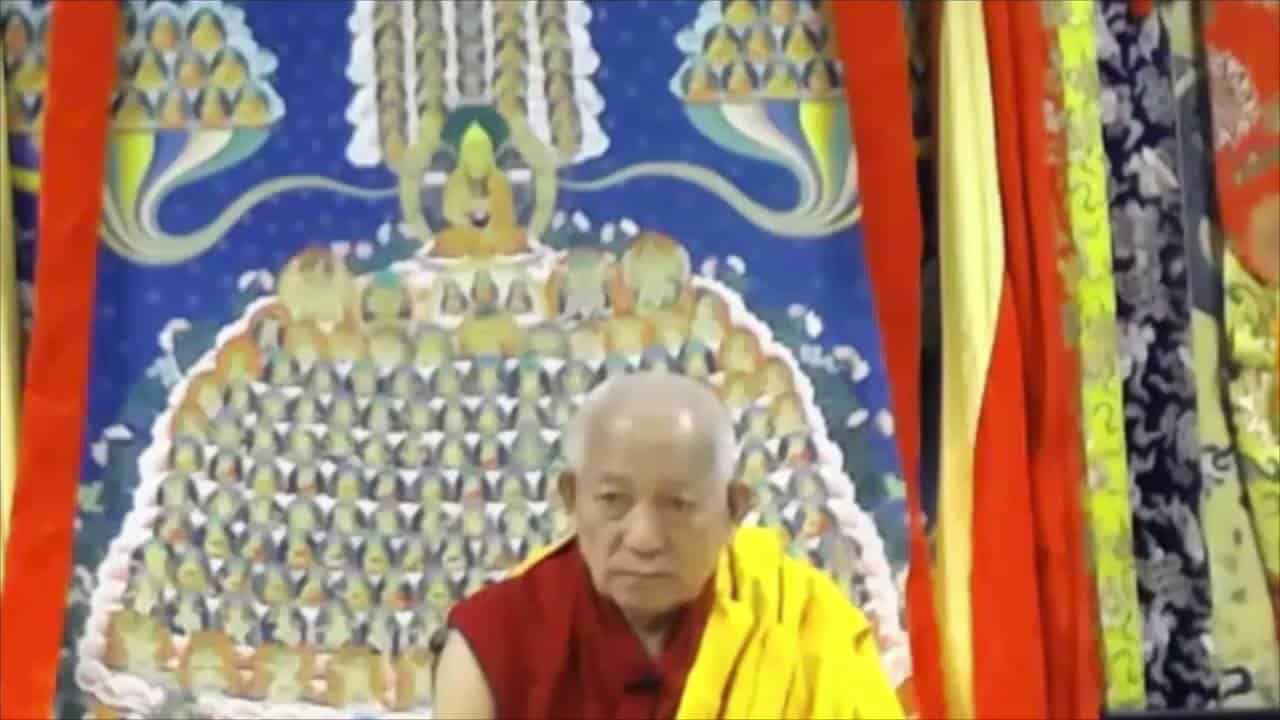Chapter 12: Verses 278-280
Chapter 12: Verses 278-280
Part of a series of teachings on Aryadeva’s 400 Stanzas on the Middle Way given on an annual basis by Geshe Yeshe Thabkhe from 2013-2017.
Questions and answers
- Difference between the view of the transitory collection, jigta, and attachment to self
- Do all bodhisattvas realize emptiness before entering the path of accumulation?
- How prayers function to affect physical matter
Verses 278-280
- Why people should be glad when hearing the teaching on emptiness which removes suffering and its causes
- Why non-Buddhist teachings do not lead to liberation
- Inference and direct experience as a means of gaining certainty regarding extremely obscure phenomena taught by the Buddha
- Analytical approach to ascertaining the validity of Buddha’s teachings
Geshe Yeshe Thabkhe
Geshe Yeshe Thabkhe was born in 1930 in Lhokha, Central Tibet and became a monk at the age of 13. After completing his studies at Drepung Loseling Monastery in 1969, he was awarded Geshe Lharampa, the highest degree in the Geluk School of Tibetan Buddhism. He is an emeritus professor at the Central Institute of Higher Tibetan Studies and an eminent scholar of both Madhyamaka and Indian Buddhist studies. His works include Hindi translations of The Essence of Good Explanation of Definitive and Interpretable Meanings by Lama Tsongkhapa and Kamalasila's commentary on the Rice Seedling Sutra. His own commentary, The Rice Seedling Sutra: Buddha’s Teachings on Dependent Arising, was translated into English by Joshua and Diana Cutler and published by Wisdom Publications. Geshela has facilitated many research works, such as a complete translation of Tsongkhapa’s The Great Treatise on the Stages of the Path to Enlightenment, a major project undertaken by the Tibetan Buddhist Learning Center in New Jersey where he teaches regularly.


